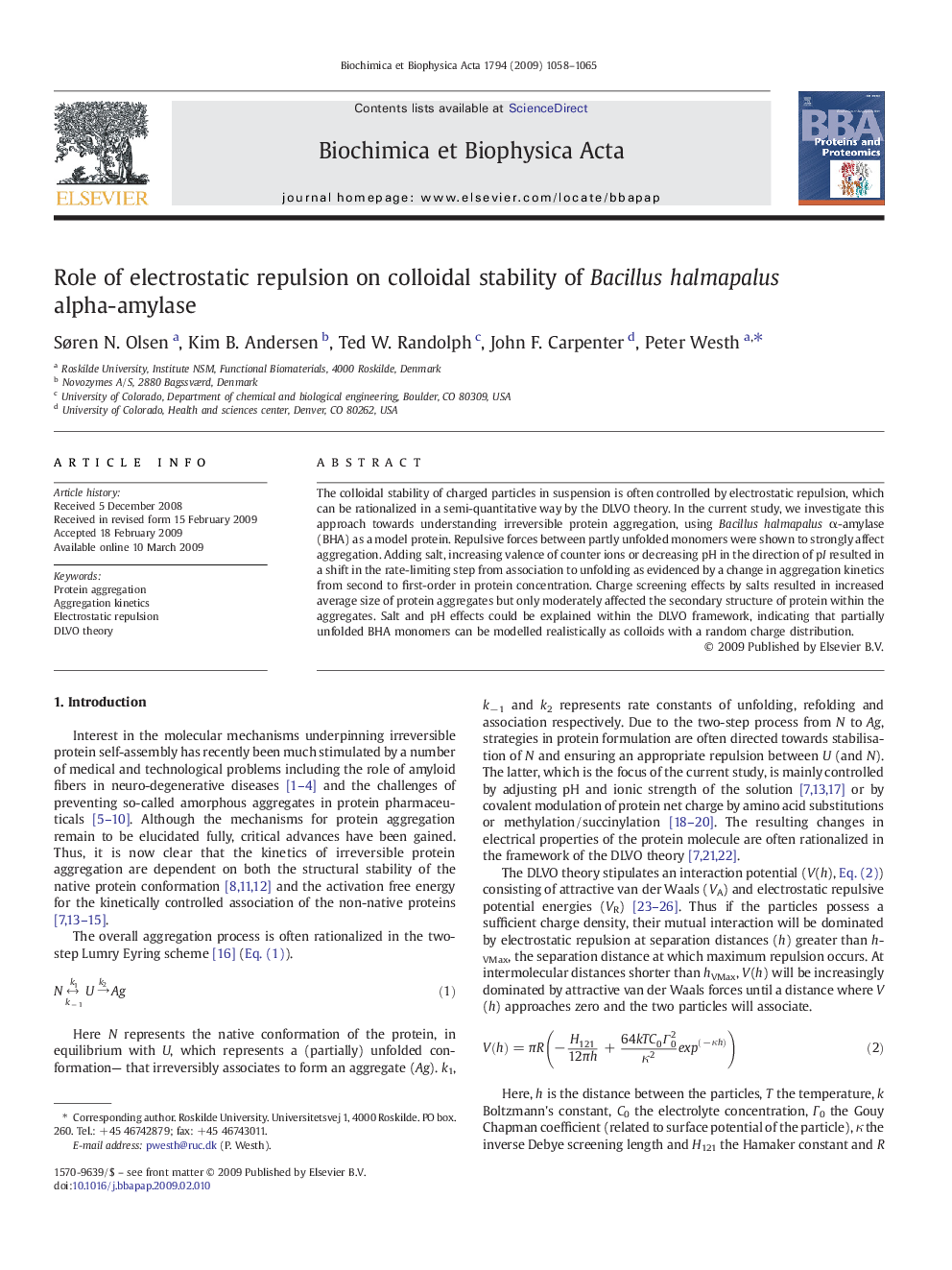| Article ID | Journal | Published Year | Pages | File Type |
|---|---|---|---|---|
| 1180267 | Biochimica et Biophysica Acta (BBA) - Proteins and Proteomics | 2009 | 8 Pages |
The colloidal stability of charged particles in suspension is often controlled by electrostatic repulsion, which can be rationalized in a semi-quantitative way by the DLVO theory. In the current study, we investigate this approach towards understanding irreversible protein aggregation, using Bacillus halmapalus α-amylase (BHA) as a model protein. Repulsive forces between partly unfolded monomers were shown to strongly affect aggregation. Adding salt, increasing valence of counter ions or decreasing pH in the direction of pI resulted in a shift in the rate-limiting step from association to unfolding as evidenced by a change in aggregation kinetics from second to first-order in protein concentration. Charge screening effects by salts resulted in increased average size of protein aggregates but only moderately affected the secondary structure of protein within the aggregates. Salt and pH effects could be explained within the DLVO framework, indicating that partially unfolded BHA monomers can be modelled realistically as colloids with a random charge distribution.
